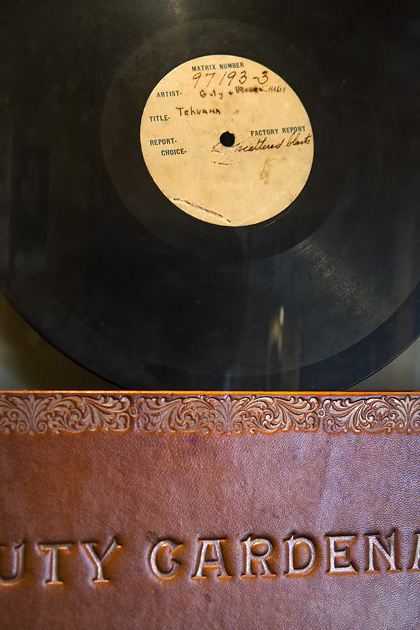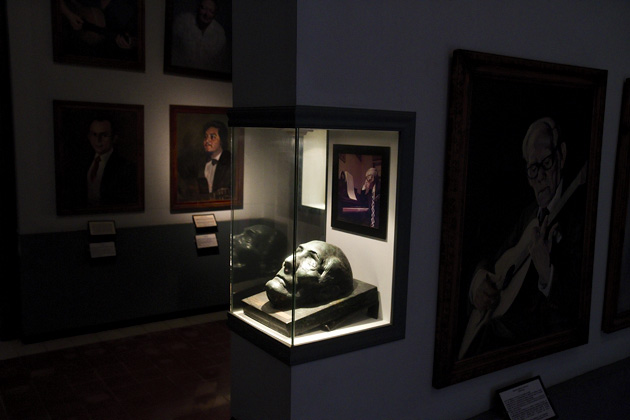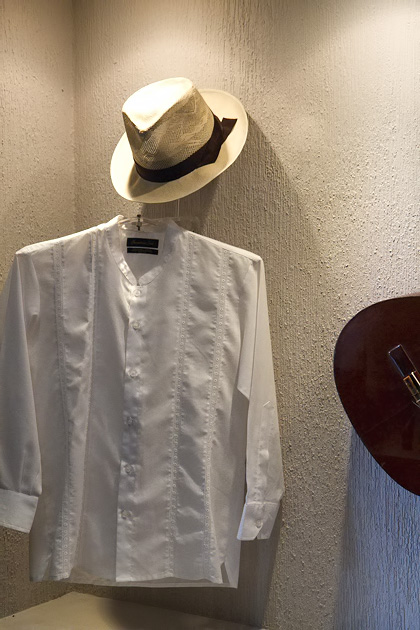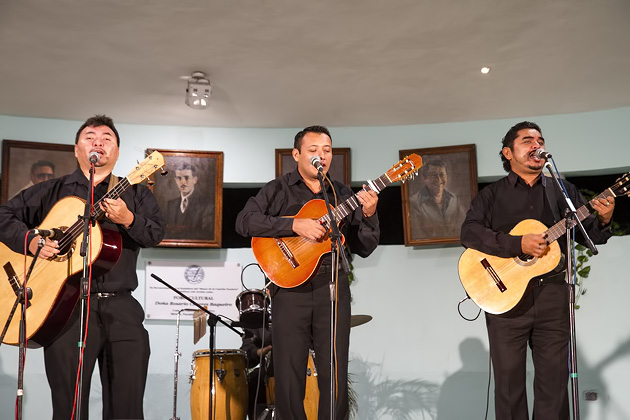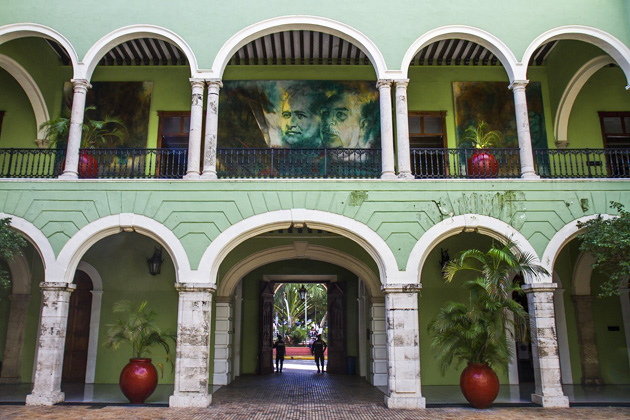La Música Yucateca
One of the Yucatán’s defining characteristics is its love of music. From the daily free concerts in the plazas around Mérida, to the Mexican pop blasting out of every tiny shop and the kids walking around with their smartphones on speaker-mode, music is an inescapable fact of life. So we weren’t surprised to find a museum dedicated to Yucatecan music, right in the center of town.
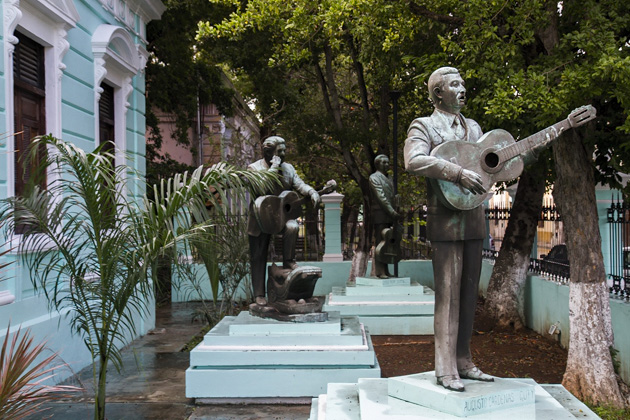
Found near the Plaza de La Mejorada, the Museo de la Canción Yucateca takes visitors on a tour of the peninsula’s musical history. The first room introduces ancient Maya instruments, but the exhibits quickly veer into celebrating the twentieth century artists responsible for bringing a golden age of Yucatecan music. For people such as ourselves, without any prior knowledge of the subject matter, reading the backgrounds of people we’d never heard of wasn’t terribly absorbing. It would be like visiting Cleveland’s Rock & Roll Hall of Fame without knowing Elvis Presley from Little Richard.
We were so quickly finished with the museum that we startled the lady from whom we’d bought tickets. The building and its courtyard are beautiful and the entrance price minimal, so it was a pleasant visit, but not an experience we were thrilled about. However, that didn’t stop us from making a return trip two days later. On a balmy Friday night, the museum was putting on a concert paying homage to the some of the peninsula’s greatest artists.
Now this was the kind of introduction I could get behind. For an hour, the talented lads of El Trio Ensueño took us through a musical crash course of the Yucatán’s most popular artists. Cirilo Baqueiro, Manuel Merodio, Guty Cárdenas … I’ll admit that I’m just copying these names from the program, but I really did love the music. Personal favorites included “Si tu no estás aquí” by Sergio Esquivel and Armando Manzanero’s “Somos novios”, the latter of which might be recognized by fans of Perry Como.
In 1971, Perry Como released an English-language version of “Somos novios” called “It’s Impossible”. Naturally, Mr. Manzanero’s permission hadn’t been sought, nor was he offered any compensation. Como and his studio simply translated the song into English, turned it into a massive hit, and even picked up a Grammy for their troubles. It was as open-and-shut a case of copyright theft as has ever existed, but a shameless US court ruled against the Mexican.
Now that I know some of the songs and artists, I’d probably be more receptive to the exhibits inside the Museo de la Canción Yucateca. But regardless of your knowledge of the peninsula’s music, don’t miss out if you happen to be in Mérida while the museum is putting on a show. You don’t need to know the names of the songs to enjoy their rhythms.
–Our Photos In High Resolution



